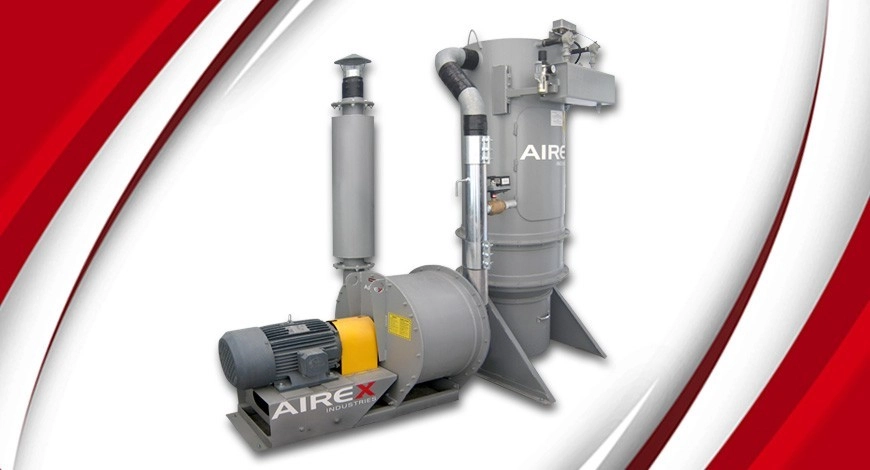
High-Vacuum Pump and Dust Collection: Three Examples of Excellent Uses at Your Plant
When considering the use of high-vacuum pump, the idea of adding a dust collector to it doesn’t always come to mind immediately. However, it’s a winning duo for one simple reason: in many situations, a dust collector is the main way to adequately protect your system’s pump.
Although pumps can operate under very high pressure, they aren’t designed to handle dust. Debris at your plant that finds its way into the pipes and reaches the pump will soon damage it, leaving you with significant repair costs that could easily have been prevented. In addition to protecting your pump, the dust collector and high-vacuum pump duo is highly effective in various circumstances. Here are three of them.
Need a Central Vacuum System?
Industrial dust is often explosive, and you know that letting it build up is not an option. You also know that housekeeping is important, especially for preventing those explosions. Although a simple industrial vacuum is still an effective way to clean, using the high-vacuum system paired with a dust collector can be beneficial, especially if you have a large plant. The benefits? Less equipment (just one pipe) and the possibility for multiple members of your team to use the same system by means of multiple intakes. This is perfectly relevant for cleaning the work station of an automated process that isn’t in operation, for example, or if you want to vacuum up dust that may not have been previously captured at source.
For this purpose, the NFPA 654 standard stipulates that it is prohibited to let more than 3.2 mm (1/8 in.) of combustible dust accumulate on a work surface for a period of less than 24 hrs. Using a compressed-air bellows is just as prohibited because it creates a cloud of explosive dust that is extremely dangerous for the workers’ health and safety. Hence the benefit of opting for a high-pressure centralized vacuum system for risk-free cleaning of the work environment.
Zero Accumulation Objective: Capture at Source
In industries where materials with highly explosive dust are handled, equipping the tools used by your employees with an at-source vacuum intake is an excellent method of collecting the dust and directing it right to the central dust collection system. This way the workers, even large numbers of them, remain mobile.
The high-vacuum pump/dust collector combination used this way makes it possible to, among other things, capture potentially carcinogenic fine dust, or vacuum up welding fumes containing hexavalent chromium. Result: no build-up of toxic inhalable particulates and therefore less cleaning. In addition, this solution makes it possible to meet the health and safety standards pertaining to the management of airborne contaminants.
Moving Raw Materials with a Pneumatic Conveyor
For your needs to move raw materials (powders, granules, pellets, etc.), the high-vacuum pump and the dust collector can act as a pneumatic conveyor. The pump draws in the raw material stored in the silo, which then passes through the pipes. Upon arriving at the destination, the materials are separated from the compressed air by means of the dust collector placed at the end of the circuit. The materials fall to the bottom of the hopper by the force of gravity. They are immediately ready to be used in the next stage of the production process. Regarding the pressurized air, it is filtered by the dust collector and exhausted to the outside, ensuring that no materials are lost.
Specialized Expertise Serving Your Needs
The various uses of a high-vacuum pump associated with the dust collector described here all require a faultless design. For example, consider the system’s minimum velocity to be maintained based on actual use. The challenge? Maintaining a minimum speed of 4,500 feet/minute to prevent the build-up of potentially explosive particles in the system, including the lines to which multiple intakes are connected. The trick? Install a system of valves and dampers to maintain the flow and keep the pump from overheating.
Are you concerned about implosions (we can understand that!)? Our experts adapt the design of the dust collectors and add reinforcements so that they can withstand high pressure (between -80 and -180 in.w.g.). This design is also validated during finite element simulations using specialized software. Since a high-vacuum system requires superior air-tightness, reinforced fasteners with air-tight seals are installed. However, these interfere with the conductivity of the grounding. This is why our experts take care to remedy that by connecting the grounding to all sections of the system. This step ensures that no part of the dust collection system builds up a static charge that can cause sparks.
Whether you need a dry or wet dust collector combined with a high-vacuum pump, our experts will be able to find the right solution for you. We will be pleased to work with you.
Get in touch with our experts!
